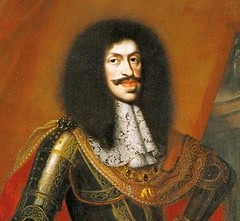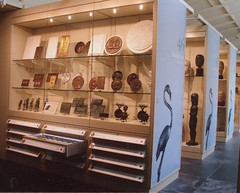
PREV ARTICLE
NEXT ARTICLE
FULL ISSUE
PREV FULL ISSUE
NOTES FROM E-SYLUM READERS: AUGUST 23, 2015A Note from Harry Cabluck
I enjoyed, even more than usual, your latest E-Sylum (Volume 18, Number 33, August 16, 2015). You make the reader feel as if he were alongside you in Chicago. FYI, I was able to purchase a few books from the John Huffman Library sold by Second Story Books, thanks to the ad posted in The E-Sylum. The book selections from the Huffman library are superb, and a pleasure to peruse. I also always enjoy poring through the Kolbe & Fanning site as well, and have made several selections from their offerings. The E-Sylum makes it easy to locate them. The Potato Chip Proofs
The article on the new and improved proof set packaging machine mentions that it replaces a system installed in 1999. FWIW, back in 1999 I was working at Harlan J. Berk's in Chicago, and we ordered a lot of the sets because of the interest in the Statehood quarters which debuted that year. When we checked our first order, we discovered that most of the cents had a ring-shaped discoloration on the center of the reverse. I surmised that some sort of suction device was being used to pick up the coins to place them in holders, and that the tube or whatever was leaving a residue on the coins which discolored them after they had passed inspection. I tried to ask the Mint about it, but as usual received no response to my inquiries. Eventually the problem went away. Some time after I started working at ANACS in 1978, John Hunter there told me a story about a VIP tour of the San Francisco Mint he had taken not long before. He and his guide had gone into the proof set packaging area, where sets were still being assembled by hand. The guide had pointed out how all the workers were gowned, with hair caps and gloves to protect the coins, when suddenly they came upon a worker who was, between sets, sticking her gloved hand into a bag of potato chips and shoving them into her mouth! She then used the same hand to assemble the next set before her. John said that the guide almost exploded before they quickly left the area. To read the earlier E-Sylum article, see:
The Origin of 'Leopold the Hogmouth'
So this nickname has been attributed to Hans Schulman, and before him to Ed Frossard. A plausible lineage, but hard to prove. Someday a
question like this will be much easier to answer. Will a full text search capability for the Newman Numismatic Portal, a researcher could
find all references to the word "Hogmouth" in the corpus of digitized numismatic publications, and locate the first and
subsequent uses of the term. Meanwhile, if anyone can locate the term in a Frossard publication, let us know. -Editor
To read the earlier E-Sylum articles, see:
Standard Catalogue of World Paper Money Editorship
Now that George Cuhaj is no longer at Krause, who is now the editor of the SCWMP?
That's short for Standard Catalogue of World Paper Money. I've reached out to someone at Krause parent F+W Publications.
I'll report back later if I get a response. -Editor
Plates for 1896 Montagu Sale Sought
I just bought an auction catalog of the Collection de Feu M.H. Montagu Monnaies D'Or Romaines and Byzantine, April 20-28,1896 ( this is an original copy). The problem that I have with this catalog is that it is missing three of its plates, #1, 3 and 4. I was able to get plate #1 from a Google digitized copy of the catalog the other two plates have black circles for some of the coins. I am hoping that someone in the E-Sylum readership may be able to help me obtain copies of these other 2 plates or tell me where I can obtain them from an original copy. I would then be able to get this catalog rebound as the spine and covers are falling apart. Coins Found at Jamestown Settlement
This is the list of coins recovered from mixed (i.e. not tightly sealed and dateable) contexts of the Jamestown Rediscovery Project as of January 2015. My dissertation has listings of all the coins from sealed 1607-24 contexts as of January 2015. my dissertation will be summarized in a chapter in The Archaeology of Money to be published by the University of Leicester and coming out early 2016.
Thanks. I forwarded the list to readers John Kraljevich, Tom Kays and Erik Goldstein, who all have interest in the circulating coinage of
the American colonies. If anyone else would like to see this, let me know. We'll look forward to the publication of the
Archaeology of Money chapter. -Editor
To read the earlier E-Sylum article, see:
Query: Valuing Colonial Coins With Environmental Damage
I am looking forward to the summary and was aware of about half the coins and coin types as they were talked about outside her dissertation. Posthumous Elizabeth I Irish coppers of 1601 and 1602 are scarce but found in quantity in Jamestown as are jetons of Hans Krauwinckel II. The real surprise are the quantity of debased King’s scrofula tokens. Perhaps they qualify as medical supplies against unknown new world ailments, as do the jetons as office supplies, not so much as money. My question for the E-Sylum readership: How do you readers place value on common Virginia Halfpennies by grade, that were dug from the ground and have environmental damage? At what point do Very Fine, Extra Fine, or Almost Uncirculated “details” begin to assert a numismatic value over the historic “relic” value of these coins. A large quantity ranging from very high grade down to the more circulated grades has been unearthed and needs to be appraised. Does the old formula of knocking them down three full grades for corrosion still apply? Quick Quiz: Cotton in Coin Designs
Here's a puzzler for your readers. Which US coin(s) prior to 1922 featured cotton (the plant) in their design? That's an easy one. Which French coin(s) prior to 1922 featured cotton (the plant) in their design? Not so easy, huh?
I have my own answer to the U.S. coin question. What do readers say? Results next week. -Editor
American Art Museum Medal Collection Still On Display
To read the earlier E-Sylum article, see:
Steve Ruddell, Chess Player
Steve Ruddell, former DC coin dealer, specializing in silver dollars and patterns, was a chess enthusiast as well. I don’t know how high his rankings were, but I remember going to a chess tournament with him. To read the earlier E-Sylum article, see:
Bay Psalm Book at the Library of Congress
Les Rosenbaum forwarded this announcement about an exhibit at the Library of Congress of interest to bibliophiles. Thanks. -Editor
"First Among Many: The Bay Psalm Book and Early Moments in American Printing" will open Thursday, June 4, and will close on Saturday, Jan. 2, 2016. The exhibition will be free and open to the public from 8:30 a.m. to 4:30 p.m., Monday through Saturday, in the South Gallery on the second level of the Library’s Thomas Jefferson Building, 10 First St. S.E., Washington, D.C. "First Among Many" is made possible through the generous support of David M. Rubenstein, co-founder and co-CEO of The Carlyle Group. At the centerpiece of the exhibition will be two copies of the Bay Psalm Book, officially titled "The Whole Booke of Psalmes Faithfully Translated into English Metre" (1640). One copy will be drawn from the Rare Book and Special Collections Division at the Library of Congress. The second copy, which belongs to Rubenstein, will be on display from June 4 through Saturday, Aug. 8. Americans will see these texts together for the first time. Both copies were at one time in the library of the Rev. Thomas Prince and, therefore, originally part of the historic Old South Church Library in Boston. Librarian of Congress James H. Billington said, "The Library is extremely grateful to David Rubenstein for sharing his extraordinary copy of the Bay Psalm Book. The celebration of this book is the impetus for the Library’s exhibition. The Bay Psalm Book is a book of many firsts—the first English-language book in North America, the first book of American poetry, and the first instance in a long and vital history of printing in America." To read the complete article, see:
Wayne Homren, Editor The Numismatic Bibliomania Society is a non-profit organization promoting numismatic literature. See our web site at coinbooks.org. To submit items for publication in The E-Sylum, write to the Editor at this address: whomren@gmail.com To subscribe go to: https://my.binhost.com/lists/listinfo/esylum All Rights Reserved. NBS Home Page Contact the NBS webmaster 
|

